The Truth about CFL
How Much Mercury Is In One CFL?
About As Much As A Few Cans Of Tuna
The amount of mercury in a single compact fluorescent light bulb is about the size of the period at the end of this sentence. CFLs these days contain about 2 to 3 mg of mercury, most of which adheres to the inside of the glass coil bulb and cannot be ingested. Think of the old silvery mercury thermometers that used to be in every household; they contained about 500 mg of mercury!
The trace amount of mercury dust that escapes when a compact fluorescent light bulb is broken is not by itself harmful to anyone. A person would have to break a large amount of CFL bulbs (think 20 or more) all at once to start reaching dangerous levels of mercury. That's where the real problem is; mass amounts of CFLs. If people don't properly recycle CFLs, the mercury can add up relatively quickly in landfills.
Let me be clear: mercury in large amounts is a poisonous neurotoxin which should be avoided. The point I'm making is that mercury in incredibly small amounts is not dangerous. If you break a CFL bulb, do follow the instructions provided by the EPA, but it's really nothing to be worried about.
The benefits of compact fluorescent light bulbs far outweigh the tiny amount of mercury involved.
The trace amount of mercury dust that escapes when a compact fluorescent light bulb is broken is not by itself harmful to anyone. A person would have to break a large amount of CFL bulbs (think 20 or more) all at once to start reaching dangerous levels of mercury. That's where the real problem is; mass amounts of CFLs. If people don't properly recycle CFLs, the mercury can add up relatively quickly in landfills.
Let me be clear: mercury in large amounts is a poisonous neurotoxin which should be avoided. The point I'm making is that mercury in incredibly small amounts is not dangerous. If you break a CFL bulb, do follow the instructions provided by the EPA, but it's really nothing to be worried about.
The benefits of compact fluorescent light bulbs far outweigh the tiny amount of mercury involved.
What's So Great About Compact Fluorescent Light Bulbs?
They're More Than Just Energy Efficient
 CFLs just keep getting better. Their initial cost is higher than incandescents, but not by much. The higher initial cost is offset quickly by reduced electricity bills, and this benefit continues for years. That doesn't even include the convenience of rarely having to change out light bulbs.
CFLs just keep getting better. Their initial cost is higher than incandescents, but not by much. The higher initial cost is offset quickly by reduced electricity bills, and this benefit continues for years. That doesn't even include the convenience of rarely having to change out light bulbs.The light from compact fluorescent light bulbs has been improved enough such that it is now identical to incandescent light. CFLs even go a step further with the wide variety of color temperatures available. The lights in my house are daylight (6500K), and I'd never go back to incandescent.
Black lights! Fluorescent black lights are the best, and compact fluorescent black lights are just that much easier to handle and use. Incandescent black lights are very poor in comparison, barely even emphasizing whites and neons. Every speck of dust alights with compact fluorescent black lights.
CFLs are great for indoor gardening and plant growing. The greatly reduced energy cost is a huge factor, but they're also more effective. The cool operating temperature of CFLs allows them to be placed much closer to plants, increasing light penetration and efficacy. Daylight bulbs can even be used to help ameliorate S.A.D. (Seasonal Affective Disorder) symptoms!
I hope this info allows you to see CFLs in a new light, or at the very least clears up some misconceptions. Compact fluorescent light bulbs are an effective and superior option to incandescents.
|
Dispelling Common Myths Concerning Mercury in CFLs
Mercury plays an important role in the production of efficient
light in a compact fluorescent light bulb. But there seems to be widespread misconceptions concerning the exact amount of mercury in a bulb. While there is a small amount of mercury in a CFL, the positive benefits of using a CFL versus an incandescent light bulb far outweigh the negative. To begin, the average compact fluorescent bulb contains about 4 milligrams of mercury. By comparison, the average watch battery contains roughly 25 milligrams of mercury. Despite the small amount, many consumers are still hesitant to purchase fixtures using compact fluorescent light bulbs, but each year the generation of electricity by coal-fired power plants emits 48 tons of mercury into the atmosphere. Because CFLs reduce the amount of electricity the nation’s power plants generate, overall mercury emissions from power plants should be reduced significantly. According to the EPA fact sheet on mercury, a power plant will emit 10 mg of mercury to produce the electricity to operate an incandescent bulb compared with only 2.4 mg to operate a CFL for the same amount of time. |
 |
|
“The truth of the matter is we, as manufacturers, need to be sure that the correct information is being circulated and that the proper means of disposal are made easily accessible for people. Our packaging and instruction sheets inform consumers of the proper ways to dispose of the bulbs. The fact remains that the positive benefits of compact fluorescent bulbs to the environment greatly outweigh the negative,” says David Zizzi, director of product development for Lithona Lighting.
Education is the key to making an informed decision when it comes to purchasing a light fixture. The use of CFLs in our lighting fixtures reduces electricity consumption thus reducing mercury emissions overall, and saves money on energy costs in the long term. Once you know proper safety measures for disposing of a CFL, you can confidently choose an energy-efficient lighting fixture. |
|
| Proper Disposing of Compact Fluorescent Bulbs |
| 1. Open a window and leave the room for 15 minutes or more. |
| 2. Carefully scoop up the fragments and powder with stiff paper or cardboard and place them in a sealed plastic bag. |
| 3. Use disposable rubber gloves, if available (i.e., do not use bare hands). Wipe the area clean with damp paper towels or disposable wet wipes and place them in the plastic bag. |
| 4. Do not use a vacuum or broom to clean up the broken bulb on hard surfaces. |
| 5. Place all cleanup materials in a second sealed plastic bag. |
| 6. Place the first bag in a second sealed plastic bag and put it in the outdoor trash container or in another outdoor protected area for the next normal trash disposal. Note: Some states prohibit such trash disposal and require that broken and unbroken lamps be taken to a local recycling center. |
| 7. Wash your hands after disposing of the bag. If a fluorescent bulb breaks on a rug or carpet: 1. First, remove all materials you can without using a vacuum cleaner, following the steps above. Sticky tape (such as duct tape) can be used to pick up small pieces and powder. 2. If vacuuming is needed after all visible materials are removed, vacuum the area where the bulb was broken, remove the vacuum bag (or empty and wipe the canister) and put the bag or vacuum debris in two sealed plastic bags in the outdoor trash or protected outdoor location for normal disposal. |






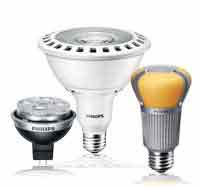
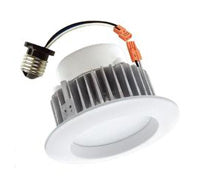

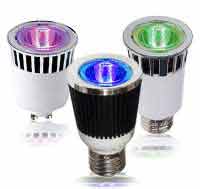


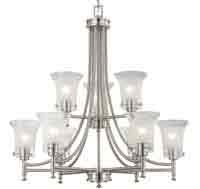
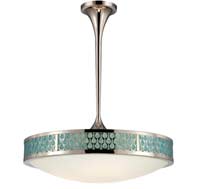




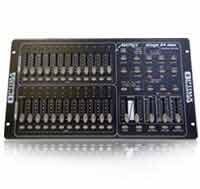






Stay in Touch